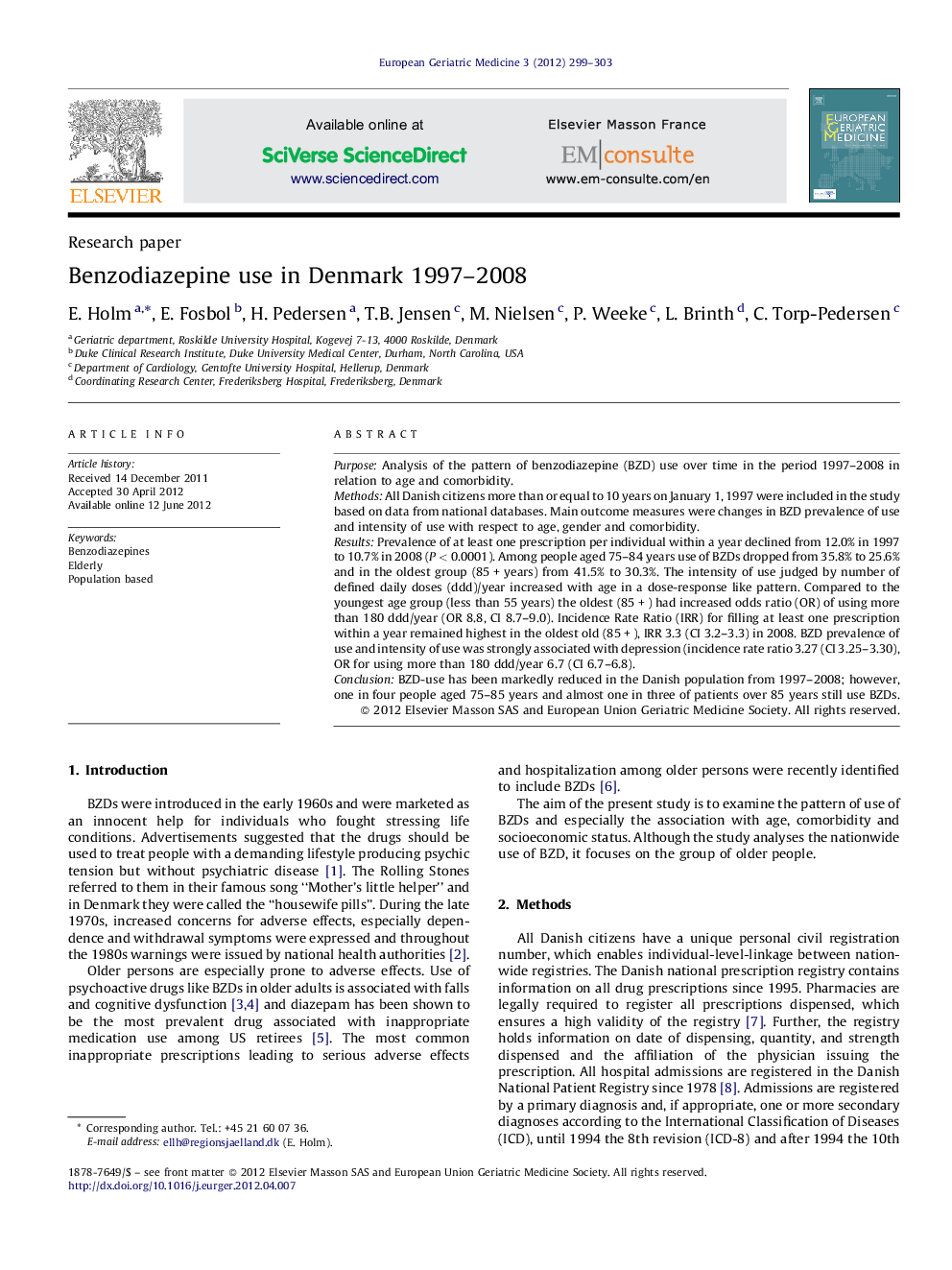| Article ID | Journal | Published Year | Pages | File Type |
|---|---|---|---|---|
| 3324276 | European Geriatric Medicine | 2012 | 5 Pages |
PurposeAnalysis of the pattern of benzodiazepine (BZD) use over time in the period 1997–2008 in relation to age and comorbidity.MethodsAll Danish citizens more than or equal to 10 years on January 1, 1997 were included in the study based on data from national databases. Main outcome measures were changes in BZD prevalence of use and intensity of use with respect to age, gender and comorbidity.ResultsPrevalence of at least one prescription per individual within a year declined from 12.0% in 1997 to 10.7% in 2008 (P < 0.0001). Among people aged 75–84 years use of BZDs dropped from 35.8% to 25.6% and in the oldest group (85 + years) from 41.5% to 30.3%. The intensity of use judged by number of defined daily doses (ddd)/year increased with age in a dose-response like pattern. Compared to the youngest age group (less than 55 years) the oldest (85 + ) had increased odds ratio (OR) of using more than 180 ddd/year (OR 8.8, CI 8.7–9.0). Incidence Rate Ratio (IRR) for filling at least one prescription within a year remained highest in the oldest old (85 + ), IRR 3.3 (CI 3.2–3.3) in 2008. BZD prevalence of use and intensity of use was strongly associated with depression (incidence rate ratio 3.27 (CI 3.25–3.30), OR for using more than 180 ddd/year 6.7 (CI 6.7–6.8).ConclusionBZD-use has been markedly reduced in the Danish population from 1997–2008; however, one in four people aged 75–85 years and almost one in three of patients over 85 years still use BZDs.
